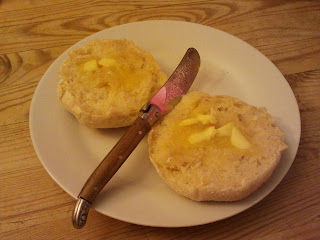A Spring recipe - Spring has finally sprung! I'd love to say I picked the wild garlic myself, but unfortunately I doubt there is much of it growing in London (not in my neighbourhood anyway!). I got mine through my organic veg box scheme, you may also be able to find it at farmers markets. If you do live in a more rural area, have a look out for it. It likes shady wooded areas and is in season now. It has oval shaped leaves and white flowers - you will usually be able to smell it before you see it!
 |
| Wild garlic leaves |
Warning: this is a seriously garlicky pesto! It has a strong pungent flavour so garlic lovers will adore the taste, but if you are not fond of regular garlic, I would stay away from this!
Serve as you would basil pesto - it is delicious served with pasta, or can also be used to dip bread or flatbreads into.
Makes around 500ml of pesto - or two small jars
Ingredients
-100g wild garlic leaves, washed, dried and chopped
-50g chopped almonds (or other nuts such as pine nuts, cashews or walnuts would work well)
-50g grated parmesan style cheese
-Zest and juice of half an organic lemon
-100ml good olive oil (more or less may be needed according to desired consistency)
-Black pepper
1. Put all of the ingredients into a food processor and pulse until you get a smooth paste. Add more olive oil if you prefer a more liquid consistency. You can also use a mortar and pestle to pound the pesto into a paste which will give a more chunky texture, however this will obviously require more time and elbow grease!















.jpg)


